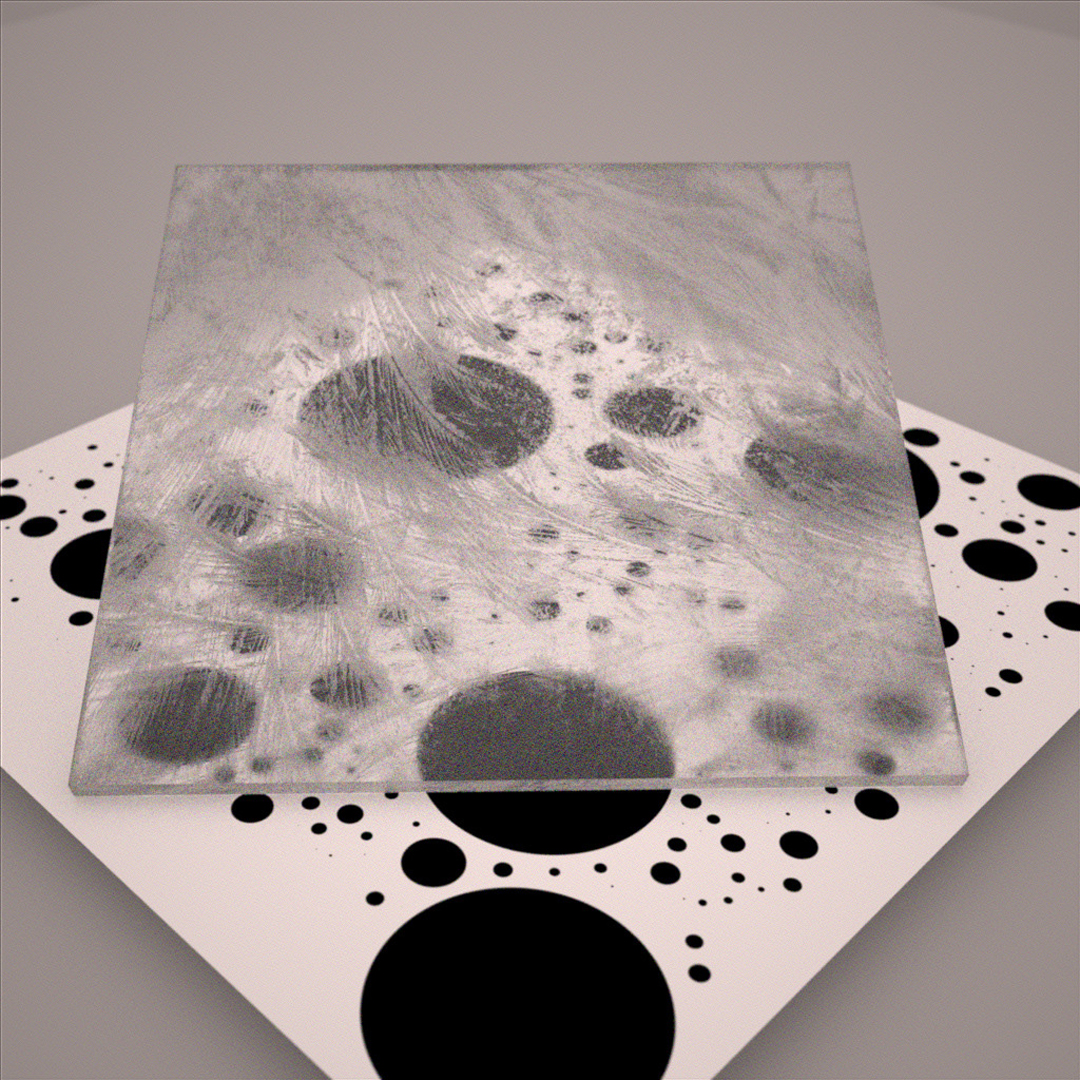“Multiple-scattering microfacet BSDFs with the Smith model”
Conference:
Type(s):
Title:
- Multiple-scattering microfacet BSDFs with the Smith model
Session/Category Title: RENDERING OF COMPLEX MICROSTRUCTURE
Presenter(s)/Author(s):
Moderator(s):
Abstract:
Modeling multiple scattering in microfacet theory is considered an important open problem because a non-negligible portion of the energy leaving rough surfaces is due to paths that bounce multiple times. In this paper we derive the missing multiple-scattering components of the popular family of BSDFs based on the Smith microsurface model. Our derivations are based solely on the original assumptions of the Smith model. We validate our BSDFs using raytracing simulations of explicit random Beckmann surfaces.Our main insight is that the microfacet theory for surfaces with the Smith model can be derived as a special case of the microflake theory for volumes, with additional constraints to enforce the presence of a sharp interface, i.e. to transform the volume into a surface. We derive new free-path distributions and phase functions such that plane-parallel scattering from a microvolume with these distributions exactly produces the BSDF based on the Smith microsurface model, but with the addition of higher-order scattering.With this new formulation, we derive multiple-scattering micro-facet BSDFs made of either diffuse, conductive, or dielectric material. Our resulting BSDFs are reciprocal, energy conserving, and support popular anisotropic parametric normal distribution functions such as Beckmann and GGX. While we do not provide closed-form expressions for the BSDFs, they are mathematically well-defined and can be evaluated at arbitrary precision. We show how to practically use them with Monte Carlo physically based rendering algorithms by providing analytic importance sampling and unbiased stochastic evaluation. Our implementation is analytic and does not use per-BSDF precomputed data, which makes our BSDFs usable with textured albedos, roughness, and anisotropy.
References:
1. Beckmann, P., and Spizzichino, A. 1963. The scattering of electromagnetic waves from rough surfaces. International series of monographs on electromagnetic waves. Pergamon Press.Google Scholar
2. Bourlier, C., and Berginc, G. 2004. Multiple scattering in the high-frequency limit with second-order shadowing function from 2d anisotropic rough dielectric surfaces: I. theoretical study. Waves in Random Media 14, 3, 229–252.Google ScholarCross Ref
3. Cook, R. L., and Torrance, K. E. 1982. A reflectance model for computer graphics. ACM Transactions on Graphics 1, 1 (Jan.), 7–24. Google ScholarDigital Library
4. Furfaro, R., and Ganapol, B. 2007. Spectral Theory for Photon Transport in Dense Vegetation Media: Caseology for the Canopy Equation. Transport Theory and Statistical Physics 36, 1, 107–135.Google ScholarCross Ref
5. Heitz, E., and d’Eon, E. 2014. Importance sampling microfacet-based BSDFs using the distribution of visible normals. In Proc. Eurographics Symposium on Rendering, 103–112. Google ScholarDigital Library
6. Heitz, E., and Dupuy, J. 2015. Implementing a simple anisotropic rough diffuse material with stochastic evaluation. Research report.Google Scholar
7. Heitz, E., Dupuy, J., Crassin, C., and Dachsbacher, C. 2015. The SGGX microflake distribution. ACM Transactions on Graphics (Proc. SIGGRAPH) 34, 4, 48:1–48:11. Google ScholarDigital Library
8. Heitz, E. 2014. Understanding the masking-shadowing function in microfacet-based BRDFs. Journal of Computer Graphics Techniques 3, 2, 32–91.Google Scholar
9. Heitz, E. 2015. Generating procedural Beckmann surfaces. Research report.Google Scholar
10. Hill, S., Mcauley, S., Burley, B., Chan, D., Fascione, L., Iwanicki, M., Hoffman, N., Jakob, W., Neubelt, D., Pesce, A., and Pettineo, M. 2015. Physically based shading in theory and practice. In ACM SIGGRAPH Courses. Google ScholarDigital Library
11. Jakob, W., Arbree, A., Moon, J. T., Bala, K., and Marschner, S. 2010. A radiative transfer framework for rendering materials with anisotropic structure. ACM Transactions on Graphics (Proc. SIGGRAPH) 29, 4, 53:1–53:13. Google ScholarDigital Library
12. Jakob, W., d’Eon, E., Jakob, O., and Marschner, S. 2014. A comprehensive framework for rendering layered materials. ACM Transactions on Graphics (Proc. SIGGRAPH) 33, 4, 118:1–118:14. Google ScholarDigital Library
13. Kelemen, C., and Szirmay-Kalos, L. 2001. A microfacet based coupled specular-matte brdf model with importance sampling. In Eurographics short presentations.Google Scholar
14. Koenderink, J., Van Doorn, A., Dana, K., and Nayar, S. 1999. Bidirectional reflection distribution function of thoroughly pitted surfaces. International Journal of Computer Vision 31, 2, 129–144. Google ScholarDigital Library
15. Kuščer, I., and Summerfield, G. C. 1969. Symmetries in scattering of slow neutrons. Phys. Rev. 188, 3 (Dec), 1445–1449.Google Scholar
16. Li, H., Pinel, N., and Bourlier, C. 2011. A monostatic illumination function with surface reflections from one-dimensional rough surfaces. Waves in Random and Complex Media 21, 1, 105–134.Google ScholarCross Ref
17. Li, H., Pinel, N., and Bourlier, C. 2013. Polarized infrared reflectivity of one-dimensional gaussian sea surfaces with surface reflections. Appl. Opt. 52, 25 (Sep), 6100–6111.Google Scholar
18. Li, H., Pinel, N., and Bourlier, C. 2014. Polarized infrared reflectivity of 2d sea surfaces with two surface reflections. Remote Sensing of Environment 147, 0, 145–155.Google ScholarCross Ref
19. Oren, M., and Nayar, S. K. 1995. Generalization of the lambertian model and implications for machine vision. International Journal of Computer Vision 14, 3, 227–251. Google ScholarDigital Library
20. Pinel, N., Bourlier, C., and Saillard, J. 2005. Energy conservation of the scattering from one-dimensional random rough surfaces in the high-frequency limit. Opt. Lett. 30, 15 (Aug), 2007–2009.Google ScholarCross Ref
21. Raab, M., Seibert, D., and Keller, A. 2008. Unbiased global illumination with participating media. In Monte Carlo and Quasi-Monte Carlo Methods 2006, 591–606.Google Scholar
22. Smith, B. 1967. Geometrical shadowing of a random rough surface. IEEE Transactions on Antennas and Propagation 15, 668–671.Google ScholarCross Ref
23. Stam, J. 2001. An illumination model for a skin layer bounded by rough surfaces. In Rendering Techniques, 39–52. Google ScholarDigital Library
24. Torrance, K. E., and Sparrow, E. M. 1967. Theory for off-specular reflection from roughened surfaces. Journal of the Optical Society of America (JOSA) 57, 9, 1105–1112.Google ScholarCross Ref
25. Walter, B., Marschner, S. R., Li, H., and Torrance, K. E. 2007. Microfacet models for refraction through rough surfaces. In Proc. Eurographics Symposium on Rendering, 195–206. Google ScholarDigital Library
26. Williams, M. M. R. 1978. Transport theory in anisotropic media. In Mathematical Proceedings of the Cambridge Philosophical Society, vol. 84, Cambridge Univ Press, 549–567.Google ScholarCross Ref





